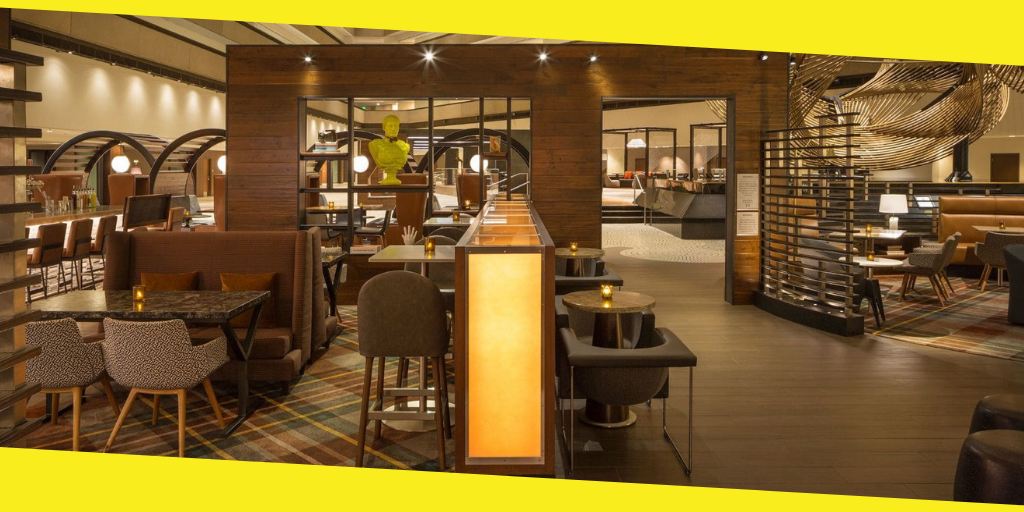3 Quick Ways to Improve Your Restaurant’s Seating Strategy
This post was last updated on July 7th, 2023

Although the modern restaurant has been around for at least 250 years, most of us are still enticed by the idea of going out to eat. With more than a million restaurant locations throughout the United States, it’s no wonder that more than 195 million US consumers visited sit-down restaurants during the spring of 2016 alone.
But while those figures are certainly encouraging, these trends don’t necessarily cement the success of your business. Although only 17 percent of restaurants reportedly fail during their first year, you still can’t afford to take a risk that won’t pay off.
But aside from your marketing efforts and your quality service, there are other ways to make sure your establishment is welcoming in every way. For example, your furniture selection (and the way you configure it) might play a bigger role than you realize.
Below are three simple ideas you can reference in order to improve your restaurant’s seating strategy — and subsequently, your customer satisfaction and revenue stream.
Contents
Toggle1. Optimize guest comfort
Although many quick-service restaurants are focused on customer turnover, there are many bars and upscale eateries that try to maximize guest duration time.
Why? Because the longer a party stays, the more they will theoretically spend on food and drink. What’s more, an enjoyable dinner or night out with friends can do wonders for your customer loyalty and brand recommendation, particularly if your staff goes above and beyond to accommodate these customers.
There are several ways to ensure your guests want to stick around, but one of the most efficient involves your furniture selection and overall ambiance. If you’re able to create a mood that invites customers to make themselves at home, they’ll be more inclined to hang around (and to keep the drinks flowing).
Your style of seating matters a lot here. You’ll want a good amount of booths and banquette tables, which typically feature longer benches paired with typical restaurant chairs. While you can’t have an entire restaurant filled with booths, these types of seating often encourage longer meals rather than quick bites.
The upside of chairs and tables is that they’re portable enough to accommodate many different parties. But you’ll also want to ensure they have enough cushioning, are strong enough, and are of the proper height to appeal to all guests.
2. Add visual interest at every angle
As mentioned above, your eatery needs to have a certain number of tables and chairs, along with booths and banquettes. You’ll likely notice that the tables and chairs in the middle of your restaurant tend to be the ones that guests shy away from, if given the option. The same can be said for tables that are nearest to the kitchen or the bathroom.
Of course, seats nearby the windows or featured walls are easy to fill. The trick is to make every single part of your seating area a desirable one for your customers. You can make those challenging spots more appealing to guests by unleashing your creativity: water features, plant walls, fireplaces, beautiful bars or wine racks, unique seating, a great floor plan and partition walls can all act as welcome additions to these otherwise bland zones of the restaurant.
Not only can they provide visual interest, but they can sometimes filter out noise that can otherwise be seen as obtrusive. These features can attract guests and make them want to sit in these areas, which means you’ll have happier customers and fuller seating arrangements on a more consistent basis.
3. Ask for feedback
Don’t forget the old adage: the customer is always right. If you’re noticing that certain areas of your restaurant tend to be less popular than others, or you’re simply struggling with making decisions pertaining to a seating upgrade, why not go right to the source?
Whether you choose to ask your customers directly or utilize your reservation software to learn more about your guests, it’s actually pretty easy to find out what diners are looking for. When guests make a reservation or call ahead, you can collect information about their preferred seating. You can also gather this data when guests arrive, particularly if they make a request on the spot.
Once you know how your customers feel about outdoor seating, booths, bar seating, and other options, you can make assessments about what’s lacking in your seating strategy and how you can accommodate your guests even better in the future. As a bonus, you can impress repeat customers by remembering their preferences and letting them know how important their feedback is to your growth and success.
Sometimes, enhancing your restaurant comes down to the basics. By ensuring that your customers feel comfortable and valued, you’ll make noticeable improvements to your restaurant seating while increasing the probability of greater revenue and guest satisfaction.
Recommended For You
7 Tips on Choosing Online Cannabis Shops for New Users
Most Inside
Most Inside offers high-quality recommendations and valuable updates to enhance all aspects of your life, providing premium guidance and enriching experiences.




